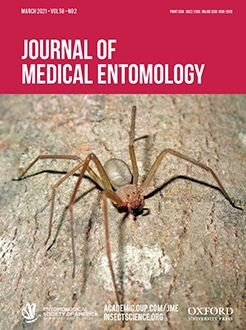Lyme disease is the most common vector-borne disease in the United States with hotspots in the Northeast and Midwest. Integrated vector control for mosquito-borne disease prevention is often organized at the community level, but tick control is primarily coordinated at the household and individual level. Management of the blacklegged tick, Ixodes scapularis (Say), the vector of the causative agent of Lyme disease in the Midwest and eastern United States in peridomestic environments may be critical as many tick encounters are reported to occur in the yard. Therefore, we assessed the effectiveness of a widely available and low-cost pesticide that targets common lawn pests and is labeled for use against ticks. In June 2019, we evaluated a granular form of gamma-cyhalothrin in a placebo-controlled residential backyard study (n = 90) in two communities in Wisconsin. The product applied by the research team reduced nymphal blacklegged ticks in plots established in the lawn part of the ecotone by 97% one week after application at both communities and by 89–97% three to four weeks postapplication. The proportion of homes with at least one nymphal tick postapplication was significantly lower at acaricide-treated homes and ranged from 4.2 to 29.2% compared with placebo homes where at least one nymphal tick was found at 50–81.5% of homes. These results support the efficacy of a low-cost do-it-yourself strategy for homeowners seeking to reduce blacklegged ticks in the yard.
How to translate text using browser tools
27 October 2020
Do-It-Yourself Tick Control: Granular Gamma-Cyhalothrin Reduces Ixodes scapularis (Acari: Ixodidae) Nymphs in Residential Backyards
Gebbiena M. Bron,
Xia Lee,
Susan M. Paskewitz
ACCESS THE FULL ARTICLE
It is not available for individual sale.
This article is only available to subscribers.
It is not available for individual sale.
It is not available for individual sale.

Journal of Medical Entomology
Vol. 58 • No. 2
March 2021
Vol. 58 • No. 2
March 2021
blacklegged ticks
pesticide
prevention
pyrethroids
tickborne disease




